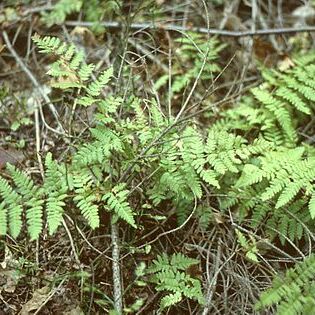Plants perennial, terrestrial or on rock, occasionally hemiepiphytic or epiphytic. Stems creeping to erect, rarely arborescent, sometimes climbing, branched or unbranched, dictyostelic, bearing scales. Leaves circinate in bud, monomorphic or dimorphic. Petiole usually not articulate to stem, scales usually persistent at base, in cross section with 2--many roundish bundles, or bundles 2 and lunate. Blade simple to commonly 1--5-pinnate or more divided, leaf buds absent or present. Veins pinnate or parallel in ultimate segments, simple or forked, free or anastomosing, areoles sometimes with included free veinlets. Indument on blade commonly of glands, hairs, and/or scales, especially on rachis and costae abaxially. Sori borne abaxially on veins or at vein tips (but usually not marginal), or sporangia acrostichoid and covering abaxial surface, if in discrete sori then variously shaped (round, oblong, or elongate); receptacle not or only slightly elevated, with or without indusium, indusium variously linear, falcate, or reniform, sometimes hoodlike, cuplike, or round. Sporangia with stalk of 2--3 rows of cells; annulus vertical, interrupted by stalk. Spores all of 1 kind, usually not green (except Matteuccia , Onoclea ), oblong or reniform in outline, monolete, variously ornamented (often broadly winged), 64 per sporangium (32 in apogamous spp.). Gametophytes green, aboveground, cordate, glabrous or often bearing glands or hairs; archegonia and antheridia borne on lower surface, antheridia 3-celled.
Terrestrial, lithophytic or, rarely, epiphytic ferns. Rhizome erect to suberect or creeping, scaly; scales usually non-clathrate, usually non-peltate, entire or with small marginal teeth. Fronds erect to pendulous, crowded to widely spaced. Stipe not jointed. Lamina 2-4-pinnate, often with the lowest pair of pinnae enlarged on the lower side, rarely simple, pedate or flabellate; veins free or reticulate. Sori mostly rounded (linear in some non-Australian genera), on a vein, between veins or at a vein tip, indusiate or exindusiate; indusium mostly round, reniform or peltate, rarely elongate to linear. Spores bilateral, usually with a perispore, rarely chlorophyllous (non-Australian genera).

